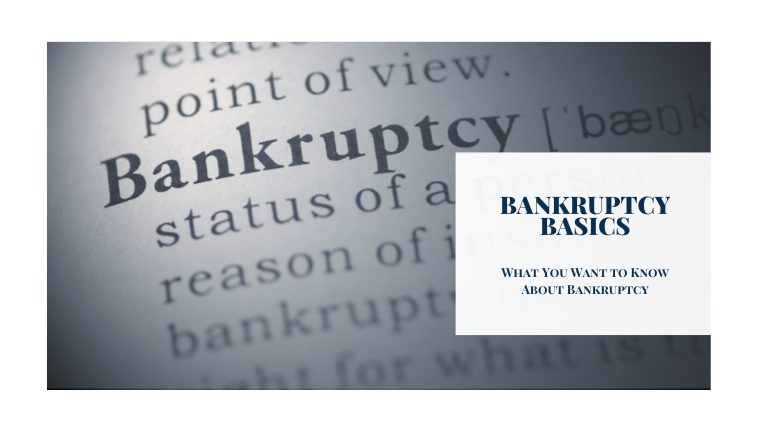Are you considering bankruptcy?
What is bankruptcy?
Bankruptcy is a legal process that allows individuals and businesses with difficulties paying their debts to obtain a fresh start by liquidating assets to pay their debts or creating a repayment plan.
Who can file for bankruptcy?
Individuals can file for bankruptcy, however, there are specific eligibility requirements that must be met in order to file for a specific type of bankruptcy.
To file for Chapter 7 bankruptcy, individuals must pass the means test, which compares their income to the median income in their state. If their income is below the median, they are eligible for Chapter 7 bankruptcy. If their income is above the median, they may still qualify for Chapter 7 bankruptcy if they pass a more complex means test.
To file for Chapter 13 bankruptcy, individuals must have a regular income and unsecured debts of less than $419,275 and secured debts of less than $1,257,850.
Businesses can also file for bankruptcy, with Chapter 11 being the most common type of bankruptcy. Chapter 11 bankruptcy allows businesses to restructure their debts and operations, and it can be a valuable tool for businesses that are struggling with debt. Chapter 7 allows a business to liquidate its assets.
There are several types of bankruptcy, each with its own advantages and disadvantages.
Where are bankruptcies filed?
No matter the type of bankruptcy cases are handled in federal courts under rules outlined in the United States Bankruptcy Code.
How does the bankruptcy process begin?
Once you complete and file the bankruptcy petition for the specific bankruptcy chosen, the process begins. The petition will include information about the individual or business filing for bankruptcy, including but not limited to their assets, liabilities, income, and expenses.
What happens once the petition is filed?
Automatic Stay
Once the bankruptcy petition is filed, an automatic stay goes into effect. This stops creditors from taking collection action against the individual or business filing for bankruptcy, including lawsuits, wage garnishments, and foreclosures. Check out our recent blog on how automatic stays work in bankruptcy.
Meeting of Creditors
A meeting of creditors is held within 21 to 40 days of the bankruptcy petition being filed. This meeting allows the bankruptcy trustee and creditors to ask questions about the individual or business’s financial situation.
Creditors’ Claims
After the meeting of creditors, creditors have a certain amount of time to file claim against you or the business’s assets. The bankruptcy trustee will review these claims and determine how they will be paid.
Repayment Plan
If you or the business is filing for Chapter 13 bankruptcy, a repayment plan will need to be created to pay off debts over a period of three to five years. The plan must be approved by the bankruptcy court and the creditors.
Liquidation
If you or the business is filing for Chapter 7 bankruptcy, the bankruptcy trustee will liquidate any non-exempt assets and use the proceeds to pay off creditors. Any remaining debts will be discharged.
Discharge
Once the repayment plan or liquidation process is completed, the court will issue a discharge order. This order will eliminate any remaining debts, with a few exceptions, such as student loans and certain taxes.
If you’re considering bankruptcy, it’s important to work with an experienced bankruptcy attorney who can guide you through the process and help you make informed decisions. They can help you understand the advantages and disadvantages of each type of bankruptcy and determine which one is right for you.
Have more questions about bankruptcy? Contact us at the firm to see how we can assist.
Attorney Advertising: Prior results do not guarantee a similar outcome.

